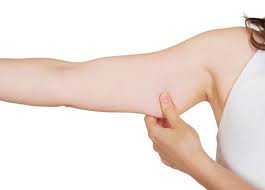Liposuction removes fat deposits from genetically programmed areas to be challenging to reduce (thighs, buttocks, hips, abdomen - for women; waist, hips - for men). It should be mentioned that liposuction is not a method of losing weight, but only of contouring the body, of "sculpting" the body. It is an excellent method of stimulating the will to obtain the desired dimensions. This type of surgery has been practiced since the ‘80s, being considered in the USA the most popular cosmetic surgery.
Which patients can benefit from liposuction?

Patients with body weight close to normal, with elastic skin, physically and mentally healthy but who have excess fat deposits located in certain areas can benefit from liposuction. Although age does not matter, in the elderly, the skin is not as elastic and can not get as good aesthetic results.
Surgery Risks of Liposuction
There is no operation that does not involve risk. Liposuction complications are usually rare, especially if patients are carefully chosen if the operating room is well equipped and the surgeon is experienced.
There is a tendency to be considered an easy operation, which can be done by any doctor and in any operating room conditions. We recommend that you contact experienced plastic surgeons for this operation, who also have the necessary equipment. Even if the doctor is excellent, if the hospital is equipped with the latest technology, no one can guarantee that there will be no complications.
The risks increase if several areas are treated in the same operating session and if the amount of aspirate exceeds 2-3 liters. If the amount of 4 liters of thick aspirate is surpassed in a single operation, blood transfusion is sometimes necessary. Infections, hematomas, and seromas can occur, the most formidable complication being the formation of blood clots or fat that can migrate to the lungs and cause death. Skin bumps can also occur, especially in people with low skin elasticity and sensitivity disorders.
Pre-surgery Indications - Liposuction
- do not eat or drink anything after midnight before the surgery;
- it is forbidden to take Aspirin and medicines containing it two weeks before the operation;
- usually, the surgery must be performed outside the menstrual period;
- you must notify the surgeon and the anesthetist if you have medical problems (blood pressure, vascular problems, heart attack, diabetes, lung problems, bleeding problems, epilepsy, neurological problems, allergies to various medications);
- you must tell your doctor if you wear dentures or contact lenses;
- if you smoke, plan to give up at least 1-2 weeks before the operation and do not start until at least two weeks after the surgery;
- avoid excessive sun exposure before the surgery, especially the region to be operated on;
- do not follow a strict diet before surgery as it may delay healing;
- if you catch a cold or an infection of any kind, the operation should be postponed.
Surgery Process
Liposuction can be done under general anesthesia, intravenous anesthesia supplemented with local anesthesia, or epidural anesthesia. The operation takes an average of one hour for an area. The anesthesiologist determines the type of anesthesia in the pre-anesthetic discussion he has with the patient.
Liposuction involves inserting a special cannula into the fatty tissue. Through 3-4 mm incisions and repeated movements, groups of cells are separated and aspirated. Usually, 2-3 incisions are needed for each area. The scars are difficult to notice and do not pose problems from an aesthetic point of view. Modern techniques use injecting the area that will be aspirated with a liquid that contains a diluted anesthetic to reduce postoperative discomfort and adrenaline that reduces bleeding. These techniques are called "tumescent techniques."
Immediately after the liposuction, the aspirated areas are bandaged with a compressive dressing to prevent the formation of seromas and hematomas.
Post-surgery Recovery
After discharge, the wires are removed 5-6 days after surgery, and this can be solved without problems by each doctor. You should wear elastic pants or belts that help to retract and evenly dispose of excess skin. Also, a crucial element that prevents unevenness in the aspirated areas is the postoperative massage that we start from the hospitalization period. Swelling and bruising disappear in the first three weeks, rarely persisting for 1-2 months. The final result can usually be appreciated after three months. The usual activity can be resumed in a maximum of 1 week. To keep the obtained result, it is essential to follow a hygienic-dietary regime recommended by a nutritionist and not to hesitate to practice a sport.
Conclusions
The number of fat cells in the human body is fixed, so eliminating some remaining decreases. The elimination of fat is permanent, but if there is an increase in the volume of fat cells through a fattening process, the volume increases in the aspirated area. Still, this area can never become as large as it was before the operation. You should know that liposuction is not a method of losing weight but a method of contouring the body. To lose weight, the most indicated methods are diet and exercise. We have a great experience with this surgery, with over 2000 cases solved in the last six years.






